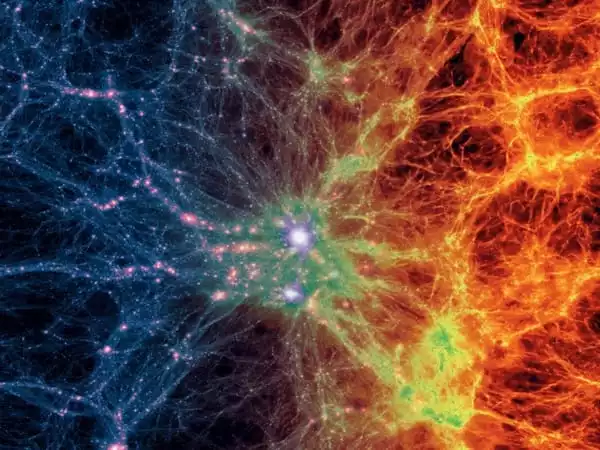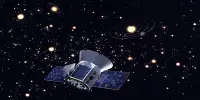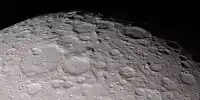Astronomy is a fascinating discipline to investigate since the cosmos is so vast and there is so much to learn about the universe’s evolution. Anyone now has the ability to observe the cosmos and see the dark matter, dark energy, galaxies, stars, and other cosmic objects that comprise the entire universe.
A worldwide team of academics created the largest and most detailed simulation of the Universe to date, which is now freely available to everyone on the cloud. This simulation, known as Uchuu, will assist astronomers in interpreting the results of Big Data galaxy surveys. Forget about online games that promise you the opportunity to explore a “whole planet.” A worldwide team of researchers created a complete virtual UNIVERSE and made it freely available to everyone on the cloud.
Uchuu (Japanese for “Outer Space”) is the world’s largest and most realistic simulation of the Universe to date. The Uchuu simulation consists of 2.1 trillion particles in a 9.63 billion light-year-long computational cube. That is around three-quarters the distance between Earth and the most distant observable galaxies. Uchuu will allow us to investigate the evolution of the Universe at a scale and detail hitherto unimaginable.
Uchuu is like a time machine: we can go forward, backward, and stop in time, we can ‘zoom in’ on a single galaxy or ‘zoom out’ to visualize an entire cluster, we can see what is really happening at every instant and in every place of the Universe from its earliest days to the present, making it an indispensable tool for studying the Cosmos.
Julia F. Ereza
Uchuu focuses on the Universe’s large-scale structure: enigmatic halos of dark matter that regulate not just the formation of galaxies but also the fate of the entire Universe. These structures range in size from the greatest galaxy clusters to the smallest galaxies. Individual stars and planets have yet to be resolved, so don’t expect to encounter any extraterrestrial civilizations in Uchuu. However, one area where Uchuu outperforms other virtual worlds is in the time domain; Uchuu mimics the evolution of matter across nearly the entire 13.8 billion year history of the Universe, from the Big Bang to the present. That is more than 30 times longer than the time it took for animal life to emerge from the waters on Earth.
Julia F. Ereza, a Ph.D. student at IAA-CSIC who studies the large-scale structure of the Universe with Uchuu, illustrates the significance of the temporal domain. “Uchuu is like a time machine: we can go forward, backward, and stop in time, we can ‘zoom in’ on a single galaxy or ‘zoom out’ to visualize an entire cluster, we can see what is really happening at every instant and in every place of the Universe from its earliest days to the present, making it an indispensable tool for studying the Cosmos.”

Uchuu was produced by a multinational collaboration of researchers from Japan, Spain, the United States, Argentina, Australia, Chile, France, and Italy using ATERUI II, the world’s most powerful astronomy supercomputer. Even with all of this strength, it took a year to create Uchuu. According to Tomoaki Ishiyama, an associate professor at Chiba University who created the code used to make Uchuu, “To create Uchuu, we employed… all 40,200 processors (CPU cores) that were only available for 48 hours every month. Twenty million supercomputer hours were spent, and 3 Petabytes of data were generated, which is the equivalent of 894,784,853 images taken with a 12-megapixel smartphone.”
Before you get too concerned about download times, consider that the study team employed high-performance computational techniques to compress the information on the genesis and evolution of dark matter haloes in the Uchuu simulation into a 100-terabyte database. Thanks to the computational infrastructure skun6 at the Instituto de Astrofisica de Andalucia (IAA-CSIC), the RedIRIS group, and the Galician Supercomputing Center, this collection is now available to everyone in the cloud in an easy-to-use manner (CESGA). Catalogues of virtual galaxies and gravitational lensing maps will be released in the future.
Despite being a supercomputer, researchers say it took them a year to create Uchuu. They employed all 40,200 processors entirely for 48 hours each month, consuming a total of 20 million supercomputer hours and creating 3 Petabytes of data, which is equivalent to taking 894,784,853 images with a 12-megapixel cellphone.
Uchuu’s Big Data science products will assist astronomers in learning how to understand Big Data galaxy surveys that will be available in the coming years from facilities such as the Subaru Telescope and the ESA Euclid satellite mission.














